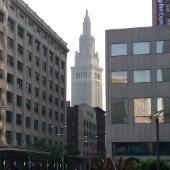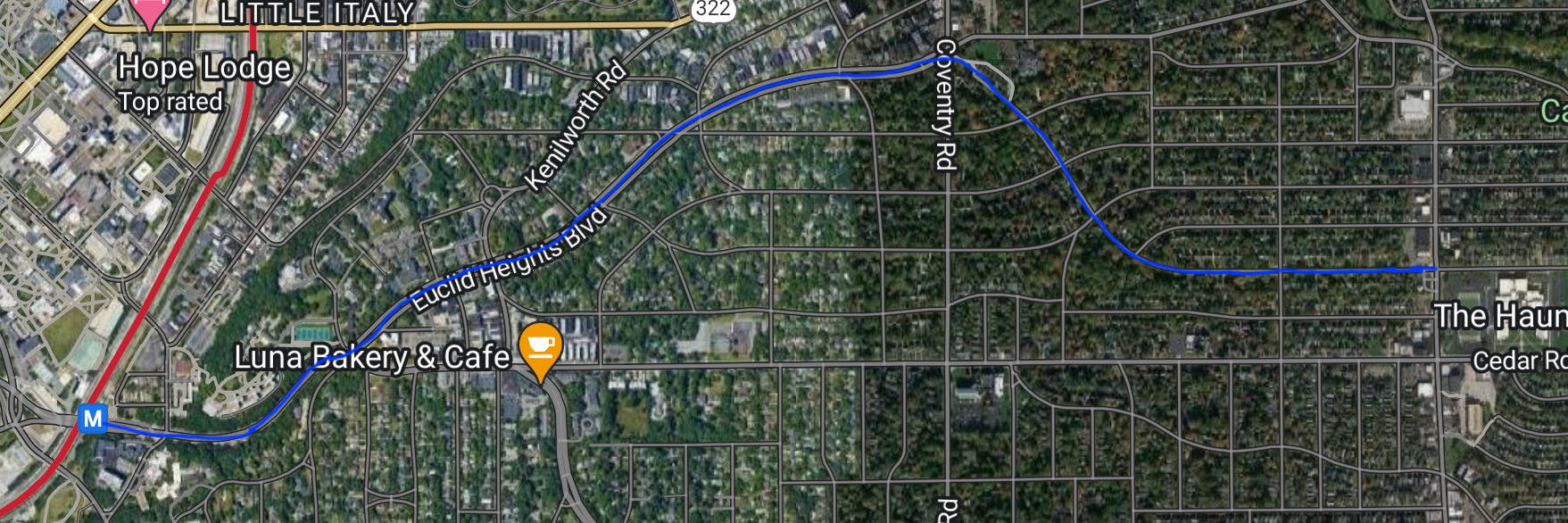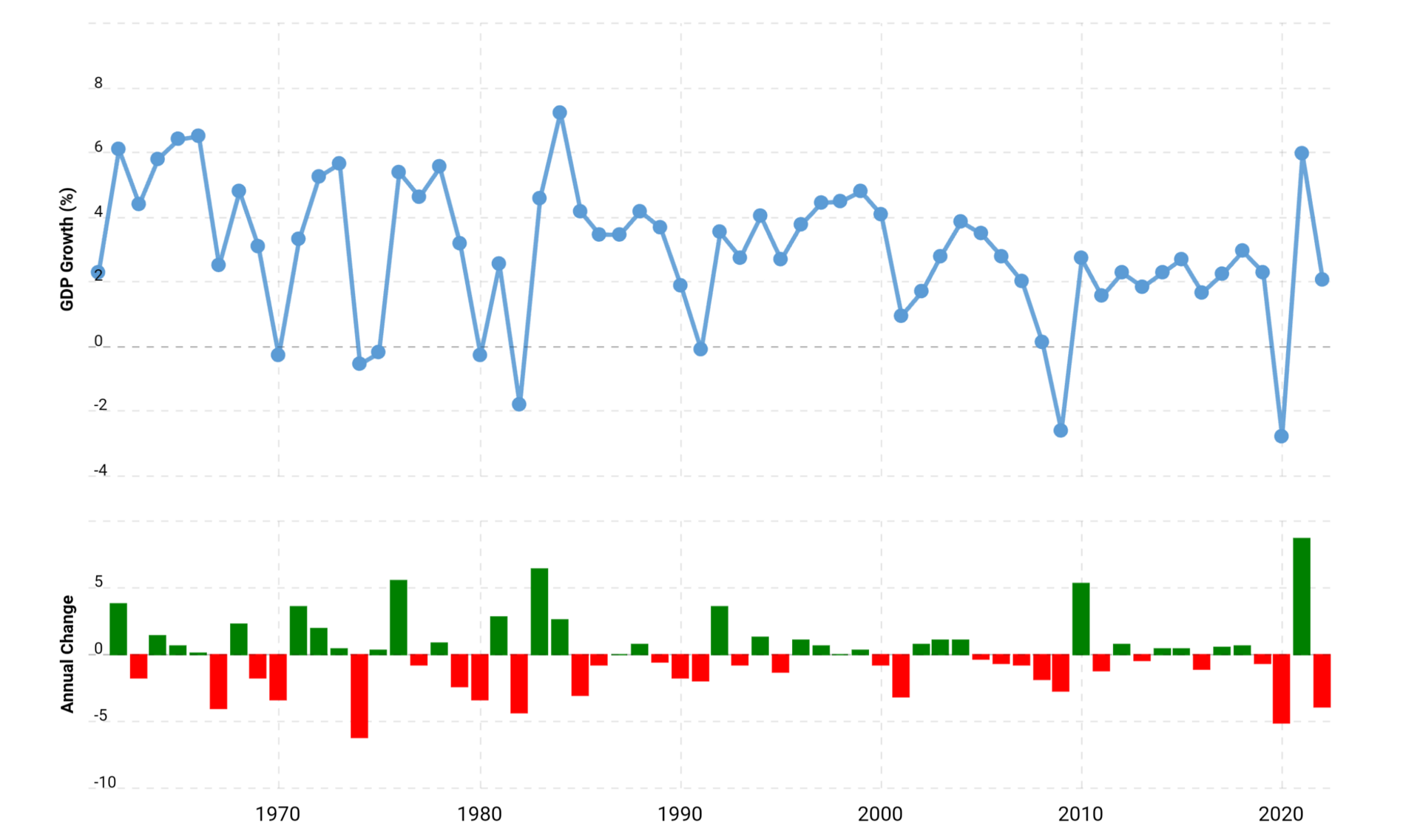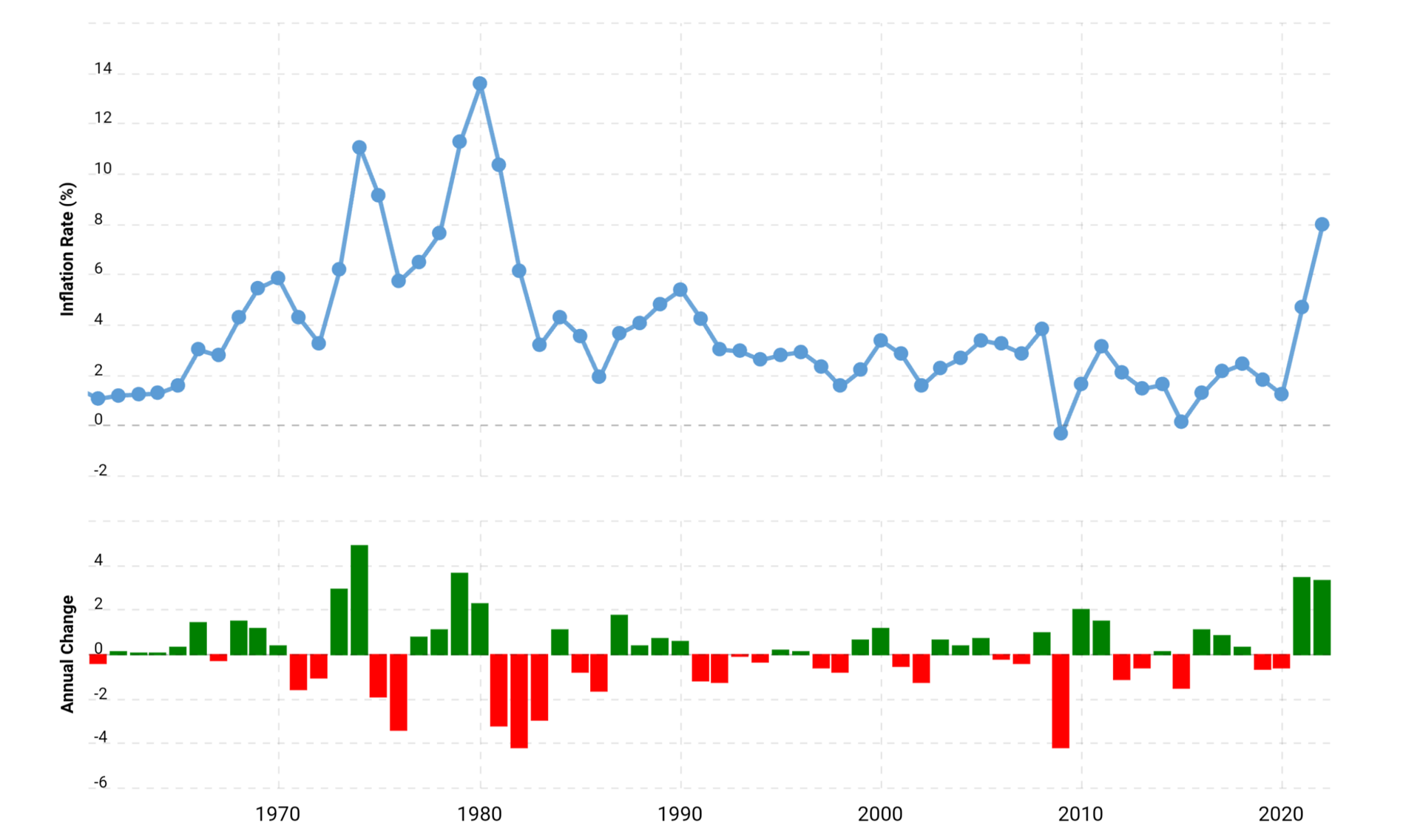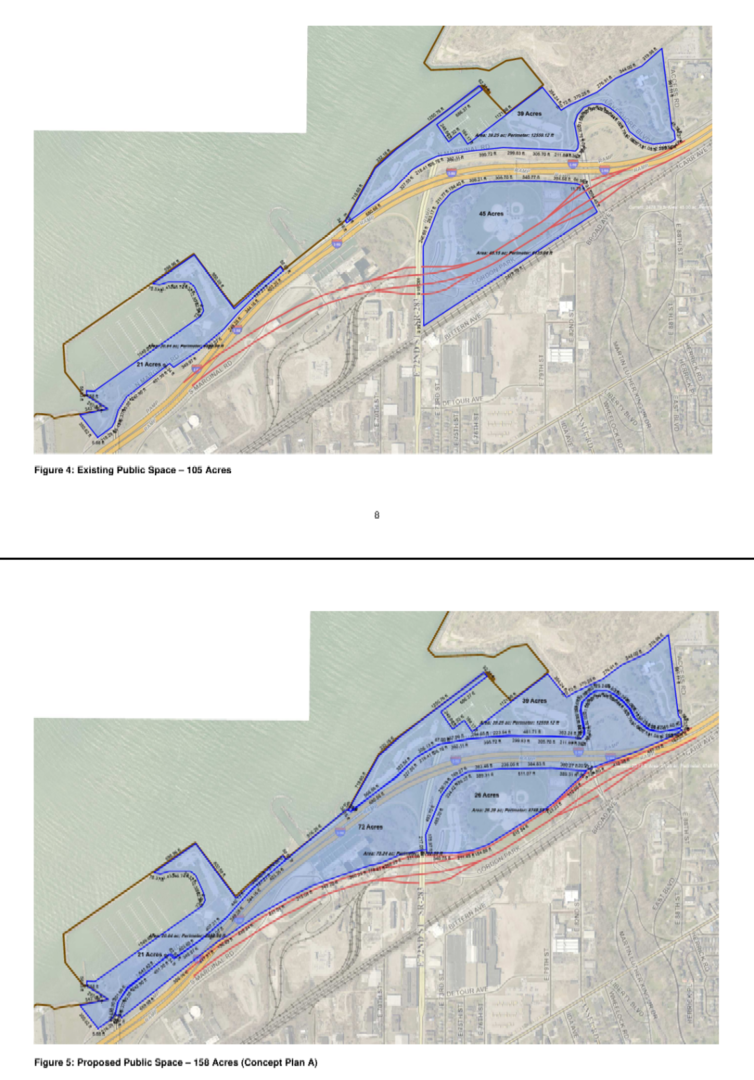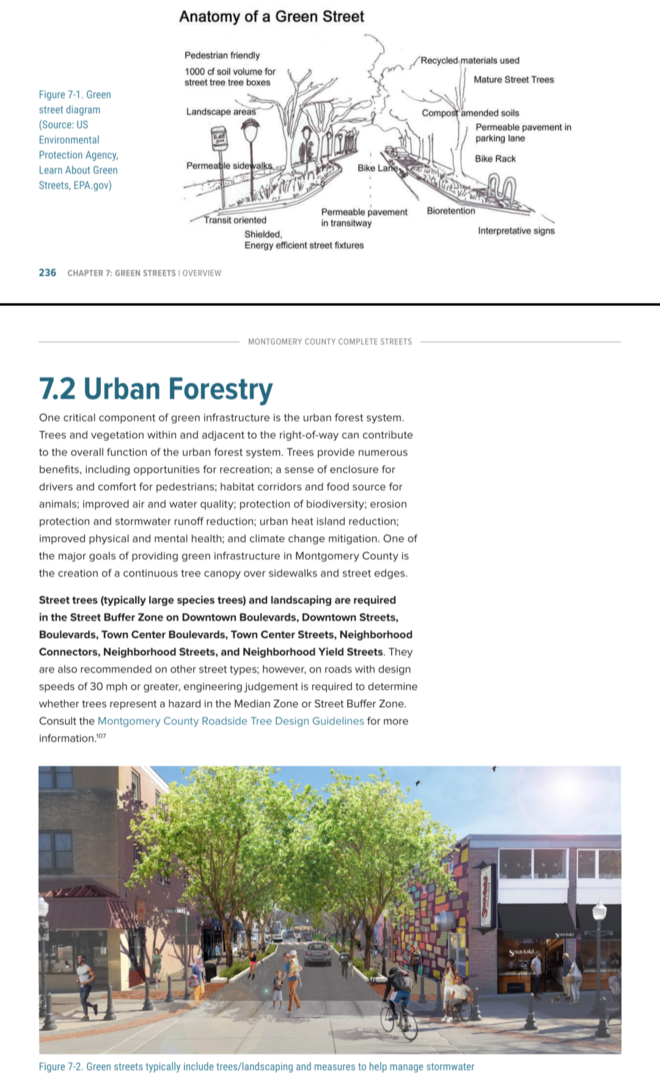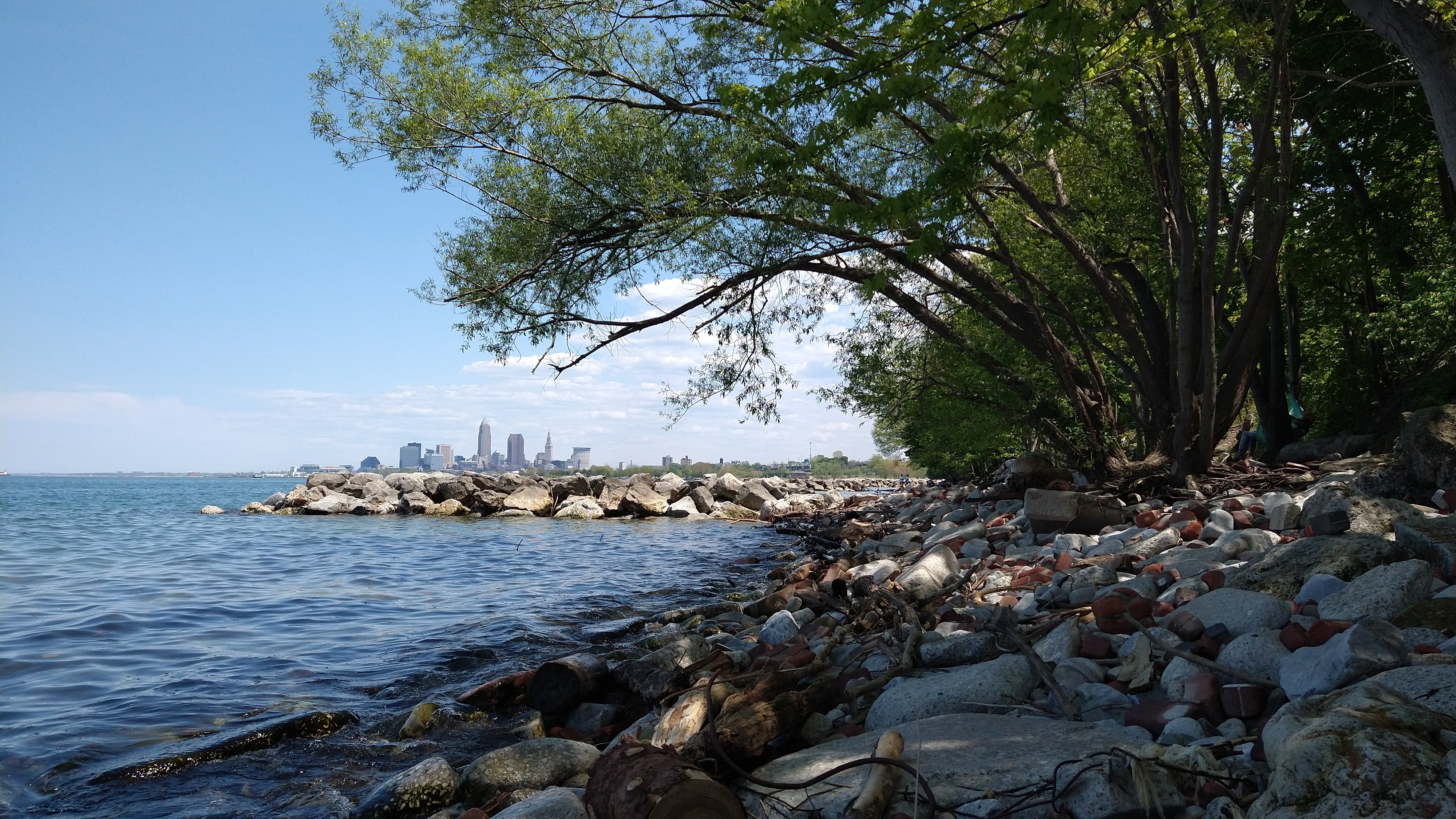
Everything posted by Ethan
-
Ohio Intercity Rail (3C+D Line, etc)
I understand your point, but you're treating this as zero sum when it's not. A better question would be whether Cincinnati benefits more from routing through Indianapolis than having the route bypass Indy. I don't know, but I would guess the answer is yes. Even if you assume the answer is no Cincinnati is still much better off than if this connection didn't exist.
-
The Future of America and Its Cities
To avoid exaggeration from either the left or the right I recommend going straight to the data itself. I'd also recommend sorting per capita. https://en.m.wikipedia.org/wiki/List_of_U.S._states_and_territories_by_net_migration
-
Cleveland: Transit Ideas for the Future
I don't know half as much as some of the people in this thread, but that said, I've been thinking about this and I've been wondering if a Cedar, Euclid Heights, Washington routing might be better routing, for two reasons. First swinging north towards Coventry picks up a lot more density, and two, both of these roads have medians making conversion to light rail Much easier. There's an obvious problem of course in that Euclid Heights doesn't actually connect to Washington... I don't think that would be much of a problem for adding rail tracks, but BRT would likely need to be diverted, as I don't realistically see anyone connecting the two roads for BRT. Regardless I still think jogging up to pick up Coventry makes sense as Cedar isn't dense between Cedar-Fairmount and Cedar-Lee. Another downside is that this pulls the stations for Cedar-Lee and Cedar-Fairmount a bit away from their ideal location. This routing is in effect arguing that walkable (~4mins) from three good nodes is better than ideally placed for two. From here it could jog back down to Cedar a couple of different ways if necessary.* Though to be honest I also question the value in going all the way to Beachwood mall area (at least not in phase 1). The mall itself is a good draw, and there's some decent density around it, but it's a decent distance (~3 miles) through low density car dependant areas. I could certainly be convinced, I just feel like this short route primarily through medians with three good, dense nodes has a bit stronger of an argument. Obviously I'd be more than happy if this hypothetical line went all the way to Beachwood Mall, I'm just trying to consider value. *There's some complications as Lee isn't overbuilt and Washington ceases to have a median after the intersection, but I'm sure it could be made to work. It would probably require some true signal prioritization, either going down Lee, Taylor, or possibly borrowing some land from the school.
-
Cleveland: Lakefront Development and News
I agree on using any removed soils from Irishtown Bend, but to your broader point, much of the impetus for this project is needing to put the dredged material Somewhere. If we get this material elsewhere, we'd both have to pay for it, and would need to find alternative use for the river dredgings. Not insurmountable challenges, but we'd be losing a lot of the efficiencies of the original plan.
-
Ohio Voting / Voter ID Law
I don't think any constitutional amendment is required. "Each State shall appoint, in such Manner as the Legislature thereof may direct, a Number of Electors, equal to the whole Number of Senators and Representatives to which the State may be entitled in the Congress: but no Senator or Representative, or Person holding an Office of Trust or Profit under the United States, shall be appointed an Elector. ... The Congress may determine the Time of chusing the Electors, and the Day on which they shall give their Votes; which Day shall be the same throughout the United States." The states have wide latitude in how they operate elections, other than time. I don't see how ranked choice voting would violate that. Besides Maine and Alaska already are. "Alaska stands to join Maine, which for the first time this year used ranked choice voting in a general election for president and began using it for congressional races in 2018." https://apnews.com/article/election-2020-alaska-legislature-state-elections-general-elections-387ba5f6b3ab79bb841bc5c29c8bceee
-
US Economy: News & Discussion
I've frequently heard the claim that inflation is linked to GDP growth. I'd invite people to look at the graphs themselves. There might be a weak relationship. (I think I saw R2 = 0.4 in one study) but the idea that high inflation causes real GDP growth is a stretch, and ditto for low inflation causing low growth. Weak correlation at best. Inflation has also been said to be linked to unemployment, the so called Phillips curve. See below for how well that has worked out in practice. I bring this example up to show that economic correlations can often look very strong in a particular time and place, such as the USA in the 1960's, but very often that trend will disappear when viewed more broadly. See also, the laffer curve. The correlation between inflation and GDP looks very strong around 2008 in the USA, and somewhat strong for Japan the last couple decades, but zoomed out the correlation looks weak to non-existent. There's also the secondary problem that adjusted for inflation, wages haven't really been going up consistently for a while. True, some things, such as electronics, are cheaper, but others, such as education, real estate, and education, are not. Very recently the trend has turned positive again, and if that lasts maybe people will start to feel more positively about the economy. https://www.pewresearch.org/short-reads/2018/08/07/for-most-us-workers-real-wages-have-barely-budged-for-decades/ https://effectivedemand.typepad.com/ed/2013/12/what-do-we-want-inflation-or-real-gdp-growth.html https://www.economicshelp.org/blog/1364/economics/phillips-curve-explained/ My understanding has been that the Fed has historically viewed 2% as a kind of not to exceed number. A target of 2- to use my earlier phrasing. The "chatter" I was referencing was talking about treating 2% more as a rolling average target. I can't remember if I saw this here, on Reddit, or in a Crains article. My apologies.
-
Cleveland: Lakefront Development and News
I'm hoping whatever happens the Green Ribbon Coalition's proposal is reconsidered. This land becomes much more valuable if it's on the other side of the highway. As is, it's stuck between railroad tracks and highway. Not great for residential or mixed use development. (Though not impossible, see duck Island). Personally I'd love to see the Metroparks buy this up, it has potential to be much nicer than Edgewater, which was a game changer for the area (assuming the highway is moved). The stadium idea is interesting as well. I'd be interested in seeing that laid out as well. If moving the highway is totally out of the cards, putting a stadium here could make sense.
-
US Economy: News & Discussion
I like the idea of a +0% inflation rate. Try to get as close to 0 as possible but err on the side of inflation instead of deflation. I agree with @Gramaryesome deflation wouldn't be the end of the world, but a small amount that encourages investing is probably better than encouraging putting it under your mattress. I don't agree with some of the more recent economic chatter that wants to change the inflation target from 0-2% to 2%. Personally I'd rather see .5% deflation than 2.5% inflation. I doubt that the majority of economists would agree with me, but my bias is towards frugality and fiscal responsibility. Too much inflation encourages people to spend their money right away, possibly good in the short term, but not sustainable. Too little encourages people to hoard their money in the hopes that it will buy more later. A small amount incentives investing in order to beat inflation. Given that, I can see the argument for a slightly higher rate than I'd like, but I don't want the situation where high-risk investments are necessary to get real returns after inflation. That seems like a recipe for disaster and not at all sustainable. Basically I think lower rates reward responsibility, and I think that's something a reasonable economic policy should do. To the extent we can reward responsible monetary behavior without damaging the economy we should do that.
-
US Economy: News & Discussion
It's also worth noting that while inflation is slowing down, prices are still going up. It's the difference between acceleration and velocity. If people are used to going 20 mph (and standard annual wage increase structures tend to operate on this assumption) and we have now 'slowed down' to 30mph people are still losing ground every day, and they are way behind from the even higher rates from a few months ago. Additionally, while wage growth on the aggregate is going up as well, often the only way to realize these gains is to change jobs, which isn't always feasible. Until inflation is at the target I don't think people will credit the economy as having improved, because most people living paycheck to paycheck don't have the luxury of being concerned with the rate of change of inflation, just the current rate of price increases that are hitting their wallets.
-
Cleveland: Housing Market
Yeah I had a friend looking at these and he told me the same thing, I thought it was for exterior repairs, could be wrong though.
-
Server Transfer/Downtime Coming Soon
On this theme, at least on mobile, the toggle button doesn't seem to be working. I'm stuck in light mode.
-
Cleveland: Lakefront Development and News
To be fair, 2, 3, 6, and part of 5 are already there. Half of these are primarily for marinas / yacht clubs.
-
Cleveland: Lakefront Development and News
I haven't seen this posted anywhere. No real new information, but it does a good job highlighting the crucial role the port has played in game changing infrastructure projects, particularly CHEERS. https://www.crainscleveland.com/politics-policy/clevelands-port-driving-300-million-cheers-project
-
Cleveland: Downtown & Vicinity Residences Discussion
Wow! It's so nice to see such a glowing, positive discussion about Cleveland in the national press! And I think I agreed with just about everything in the article. More of this please! (Both positive mentions of Cleveland, and residents downtown).
-
Cleveland: Downtown Office Buildings Updates
You make several good points, though I think they also explain the growth of Independence as a jobs hub. It's just as centrally located for the metro as a whole, but suburban commuters don't have to pay 2-6% of their wages in parking costs. Living car free downtown is an obvious solution, but is often practically impossible for many families under current realities. Even if you assume both parents can find job downtown (which often isn't the case anymore). As an aside, I agree with your point that 90 miles of roundtrip commute sounds awful, but I know a lot of people doing it... I agree with other @Mov2Ohiobetter public transportation between emerging job hubs is probably the best solution moving forward.
-
Driverless Cars
To be fair, we're calling it a recall because that's the established language for cars, in reality it's more like a software update. A century is a long time, I'd take that bet in a heartbeat. Self driving cars will be safer than human drivers eventually, and once that happens it's just a regulatory and liability hurdle. The only way this doesn't happen is if the governments of all major countries decide it won't happen. Driving isn't easy, but it isn't that hard either, and machines will have many advantages over humans. Chief amongst these is that they don't get distracted. They also can't drive angry, tired or drunk. They can also have a wider range of sensory inputs beyond just the visual light spectrum and sound. They can directly transmit their speed and position to other cars, as well as identified hazards on the road. Plus a machine can react faster than a human, giving them even more safety. Over the long term I'm more worried about an iRobot scenario where human driving is made illegal than I am for self driving cars never being fully realized.
-
Cleveland: Streetscape Improvements
These are great questions! I don't have all the answers, but here's a helpful article on the subject. https://extension.psu.edu/designing-downtowns-fit-for-trees
-
Cleveland: Streetscape Improvements
The environment is one reason out of many for adding trees, it's not the only one. I just told you I'm not advocating for cars here, please don't put words in my mouth. One interesting experiment you could try is using the image search of your choice and searching "walkable urban street." Nearly every single picture will have trees, particularly if the street is wider than alley. Here are several urban street guides advocating for street trees. I don't think you'll be able to find a single counterexample arguing against street trees from an urbanist perspective. If you do it will be in the minority. https://www.doverkohl.com/blog/2020/6/6/walkable-street-design-5-must-haves-tps-ep-9 https://nacto.org/publication/urban-street-design-guide/streets/street-design-principles/ https://montgomeryplanning.org/planning/transportation/complete-streets/
-
Cleveland: Streetscape Improvements
I agree with your general points about incrementalism, but to be honest I think they are obfuscating the fact that we clearly have a different end goal in mind, and a different ideal for the aesthetics of a big city. I think at a certain point we'll just have to agree to disagree about that. I don't follow your point about how I'm advocating for cars. That seems like a massive stretch. At best I pointed out that tree canopy isn't inherently linked to promoting alternative modes of transportation. A quick glance at many tree-lined, car-friendly streets should make that obvious. Claiming two separate issues are in fact separate issues is not advocating for the second issue. Don't confuse the population of this forum for the general population. I'm pretty sure the general public is massively pro-tree. I don't think it's even close. If anything it's a Nimby problem, as I would expect the percentage of people who want lots of trees on their street is higher than those who want more trees in their yard. After all trees require maintenance, and they have a nonzero percentage chance of falling. I saw something somewhere that Paris is also trying to add way more trees. If European cities had the average street width we do, they'd have way more trees. Taking advantage of wide streets basically requires planting trees. ...Desert's don't have trees. I understand this point is made in jest, but when people use the colloquial term concrete desert they are talking about the lack of greenery. And even in the real world trees prevent desertification. Cutting down trees literally changes the local climate. -- At the end of the day the big-city, concrete-jungle aesthetic is on it's way out, for both practical and purely aesthetic reasons. Let's make Cleveland look like the big cities of the future, not those of the twentieth century, and that means a greater focus on integrating nature into the urban landscape, not pushing it out.
-
Cleveland: Scranton Peninsula: Development and News
I appreciate both sides of this debate, but while I'm personally a huge fan of adaptive reUSE, I find it hard to justify spending a bunch of money to restabilize an unsafe structure so that it can be used as a fancy statue or work of modern art. We're talking about a bridge, it was designed to be functional. I wish it had been maintained with that in mind, but I don't think it's worth substantial investment to maintain something entirely non-functional. This structure is visible sagging, the problem is the foundation, I'm sure it could still technically be saved, but I'm also sure the costs would be absolutely ridiculous. It isn't worth it. Tear it down, consider returning the others to a functional state and maintaining them in working order as pedestrian bridges. If we let them get to the state of this one they'll have to come down too, so how about we don't let them get to that point? I'll be sad to see this bridge go. I enjoy the aesthetic.
-
Ohio Intercity Rail (3C+D Line, etc)
I was just thinking about this. Has anyone (on this forum or otherwise) given any serious thought about the precise routing of this route? Ideally this route would start in Cleveland, and stop in downtown Akron, Canton, the Akron/Canton Airport, and New Philadelphia, but the existing track doesn't seem to be very friendly to this alignment. The ideal track through the heart of downtown Akron doesn't go on to Canton, and, and quite frankly any routing through Canton seems difficult and less straightforward than I would like. It looks to be possible, but it seems like tradeoffs are required if you have to stick to existing track, with the two main options are either a suboptimal Akron station location, or opting for a stop in Massilon instead of Canton. Canton certainly seems preferable, but the more simple routing through Massillon could possibly be worth it. I don't know what the time difference would work out to. I'm just wondering if anyone smarter than me has considered this routing and what they propose.
-
Ohio Intercity Rail (3C+D Line, etc)
The article claims a "just over" 3 hour trip time from Detroit to Cleveland. That's very competitive with driving, which is just under three hours without stops or traffic. With all the focus on 3C+D, this may be slipping under the radar.
-
Cleveland: Streetscape Improvements
The ridiculous part is claiming that a city which often bills itself as The Forest City should only have one tree lined street downtown. It's also ridiculous because it's just not a serious answer to problems like the urban heat island effect. I agree that many streets downtown need reconfigured, but trees don't require large sidewalks to exist, nor are they much of an impediment to density as they just don't take up that much space. While I agree we should generally have wider sidewalks I've seen beautifully tree lined streets with narrow sidewalks. You just need to plant trees that will grow tall enough, take care of them (particularly while they're young and still growing), and then prioritize preserving them when possible when construction inevitably happens. Euclid has already received a road diet and it is certainly wide enough for trees. It has them in some locations (though they're generally too small). In my mind, the extent that it lacks adequate tree cover reflects negatively on our city.
-
Cleveland: Streetscape Improvements
↓ The implication of your statement is that a "premier urban street" shouldn't have trees. I would claim every single street* should have trees, and that includes Euclid. We need to take urban tree canopy seriously and your suggestion that we should have "one" tree lined street downtown as a nice "surprise" is ridiculous. Edit: *I should say every street wide enough for trees, but that's every major street in downtown Cleveland.
-
Cleveland: Streetscape Improvements
I strongly dispute the notion that a tree lined street is somehow less "urban" than a treeless concrete jungle. As I understand your point the aesthetics of a big city feel has historically squeezed out trees, but I'd argue that to the extent that has happened it has been a mistake, and moving forward city planners need to prioritize tree canopy. The beneficial effects on ameliorating the urban heat island effect and reducing stress haven been shown, and I don't think we can afford to treat urban tree canopies as a "nice to have" but not necessary afterthought anymore.




